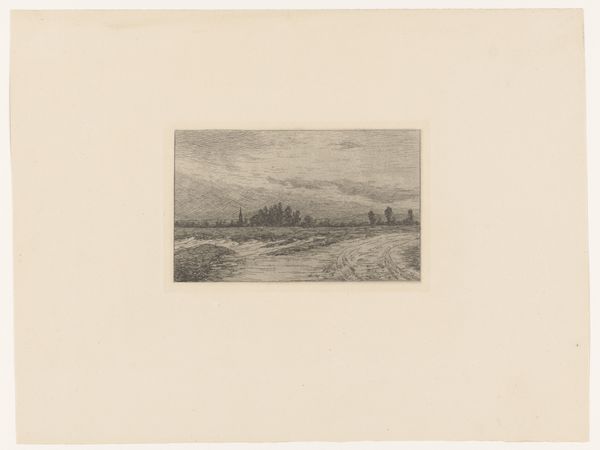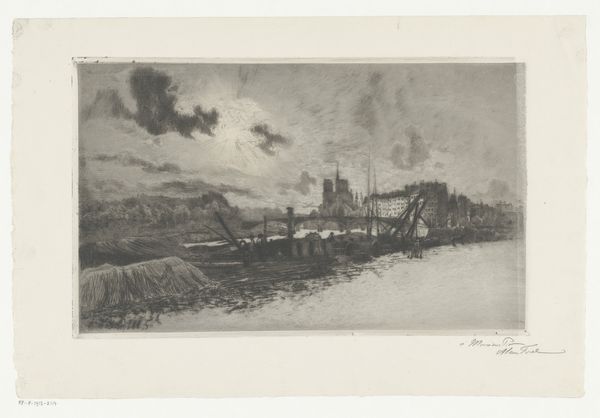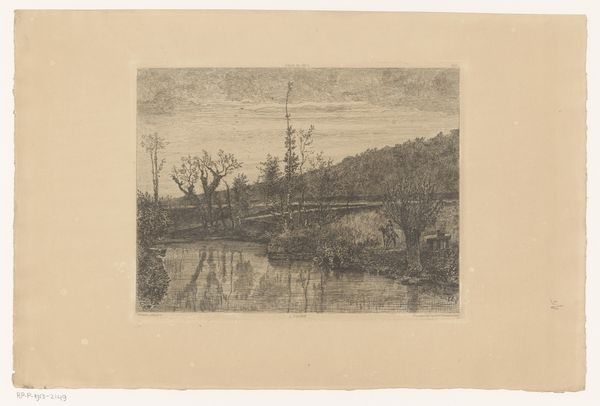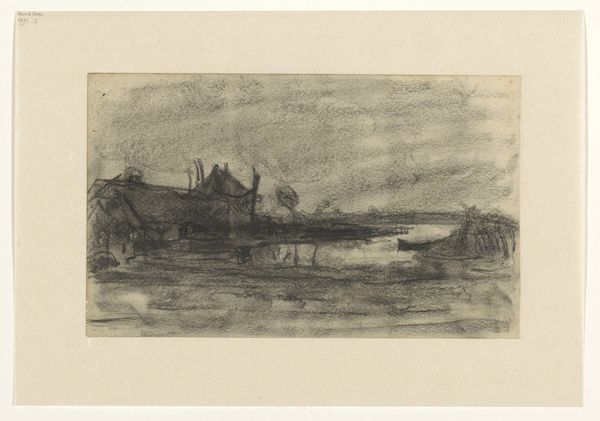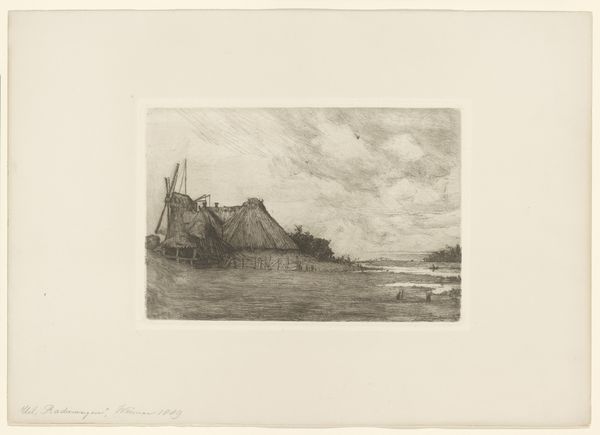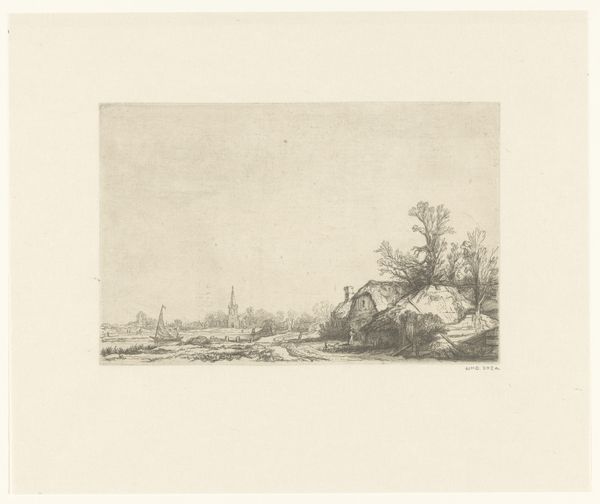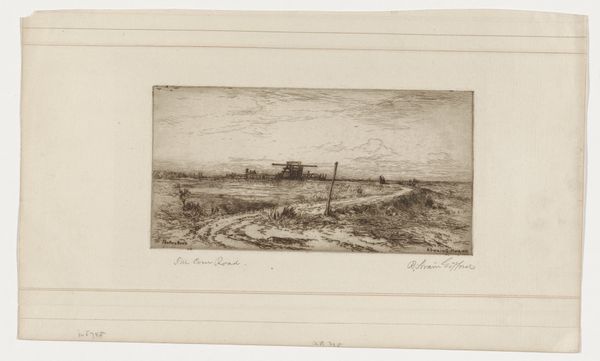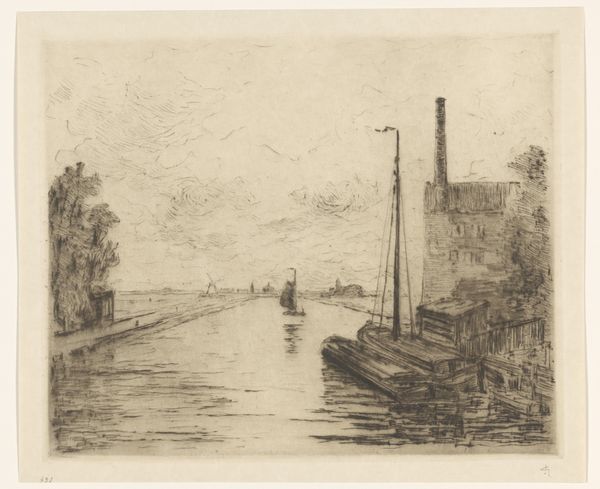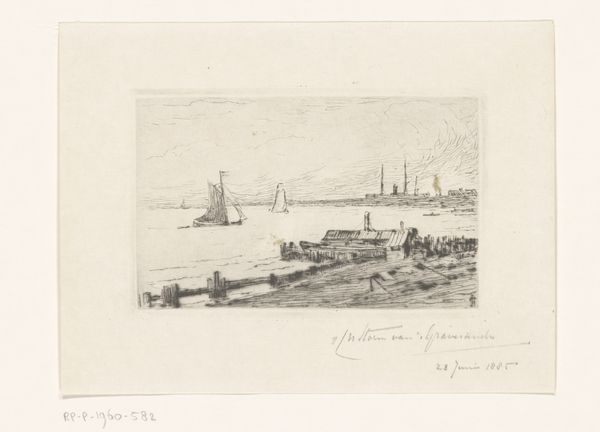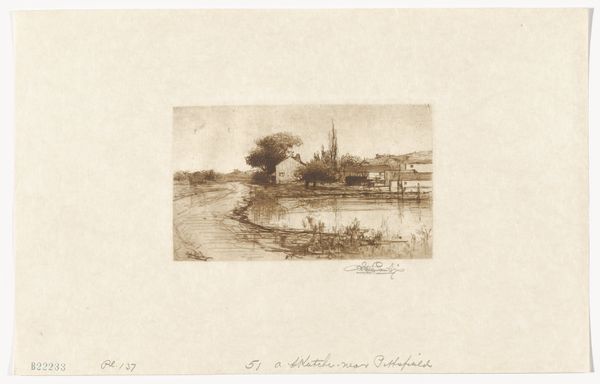
Dimensions: 3 15/16 x 7 1/16 in. (10 x 17.94 cm) (plate)9 3/8 x 14 1/4 in. (23.81 x 36.2 cm) (sheet)
Copyright: Public Domain
Curator: What a hauntingly beautiful landscape! This is Stephen Parrish’s "On the Schroon," an etching from the late 19th century. Editor: Yes, haunting is the word. There's something desolate about this scene, almost industrial. You see those bare trees on the horizon; it looks as if something has stripped the landscape bare. Curator: It's a study in contrasts, wouldn't you say? There is that rawness but the delicate etching technique lends a certain softness. The scene almost glows from within, it recalls an idealized view of a bygone era, almost an elegy. Editor: Perhaps. But consider the period. Late 19th century, rapid industrial expansion, environmental exploitation… These landscapes are often complicit, aestheticizing a moment of profound upheaval and dispossession. What is elegiac for some, is built on the forced departure for others. The very notion of wilderness is a construct rooted in the exclusion of indigenous stewardship. Curator: A very interesting point! I read those skeletal trees as symbols of resilience – a forest in recovery! What are we meant to do with imagery that lingers over landscapes of environmental loss or distress? In that regard, wouldn’t Parrish’s landscape be of interest today as it depicts a memory or an experience that can be considered “earth-based?" Editor: Exactly, its ongoing symbolic work. And how those earth-based experiences were, and still are, available to whom, and at what cost? This image reminds us of that complicated legacy, in its idyllic portrayal. Also, let’s not forget the context of etching as a medium – its proliferation made landscape imagery accessible in new ways. What power comes from that kind of circulation? Curator: True, etching allowed for the wider dissemination of landscape images. It’s amazing how a seemingly quiet image can spark so many questions. Thanks for sharing such vital historical and social contexts! Editor: Indeed. It goes to show how even the most apparently placid landscape can hold layers of history, ideology, and untold stories. Thanks for uncovering its hidden symbolism, to complement these concerns!
Comments
No comments
Be the first to comment and join the conversation on the ultimate creative platform.

